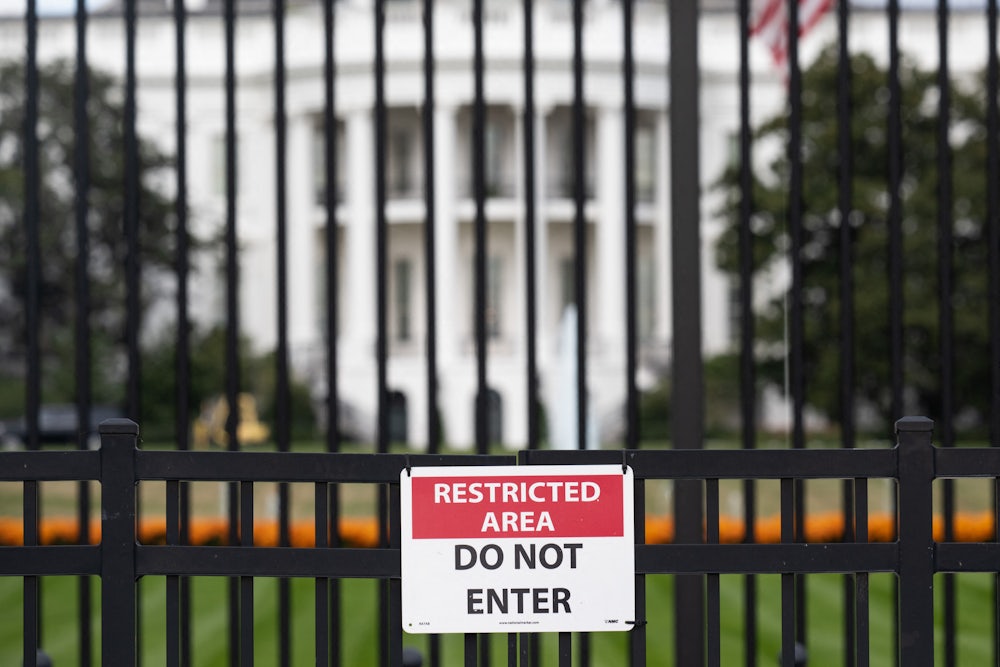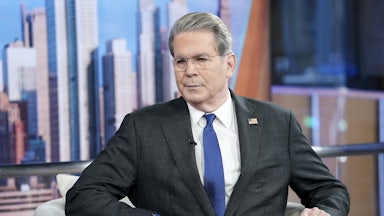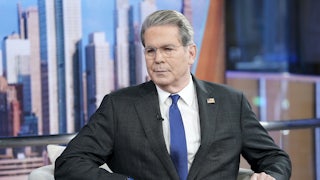President Donald Trump’s decision to bulldoze the White House East Wing to make way for a 90,000-square-foot ballroom is hardly the worst thing he’s done. It isn’t even the worst thing he did last week—that honor belongs to his pardoning his business associate Changpeng Zhao, founder of the crypto exchange Binance.
But Trump’s grandiose rehab allows conservatives to co-opt, in a uniquely annoying way, the “Abundance liberalism” arguments set forth by Ezra Klein and Derek Thompson in their book Abundance, by Marc J. Dunkelman in his book Why Nothing Works: Who Killed Progress—and How to Bring It Back, and by Yoni Appelbaum in his book Stuck: How the Privileged and the Propertied Broke the Engine of American Opportunity. I doubt any of these authors approve of how their ideas have been dragged into a defense of a Trumpian power grab—my email attempts to solicit comment from Klein and Thompson were unavailing—but they really should have seen this coming.
I won’t dwell here on my disagreements with what I’ve come to think of as the Abundance Trilogy; if you want to know more about that, click here, here, and here. In summary: I agree with the abundist premise that local zoning can be abused to keep out the “wrong element,” or to exacerbate a housing shortage, or to slow to a crawl progress on building vital infrastructure like a high-speed rail project connecting Los Angeles to San Francisco. But I don’t think the discussion ends there. Zoning can also be applied to the legitimate uses for which it’s intended, such as environmental protection and historic preservation. Zoning can even be used to require new construction to be less exclusionary of racial minorities, as Deborah Archer points out in her important book Dividing Lines: How Transportation Infrastructure Reinforces Racial Inequality. Philadelphia’s Chinatown Stitch, which Trump has defunded, is one recent example.
Rather than take the position of being anti-zoning or pro-zoning, we should regard zoning as a tool that can be applied for good or ill. We want thriving and inclusive neighborhoods, and as Jane Jacobs noted in her 1961 classic, The Death and Life of Great American Cities, achieving that requires thoughtful planning by the people who live there. Communities have a right to protect both their natural environment and their built environment in ways that make them flourish, because if they don’t it’s unlikely anybody else will. They just shouldn’t abuse that right to discriminate against minority or low-income populations.
Trump’s demolition spree on the White House grounds bears little obvious relevance to the Abundance books because (a) nothing done to the White House grounds will have any practical impact on the broader society and (b) the regulatory barriers are minimal (though these were flouted by Trump just the same).
Nevertheless, conservatives are wielding the club of abundism—explicitly, in the case of New York Times columnist Ross Douthat and implicitly in the case of the Washington Post editorial board—to defend Trump’s remodeling binge.
“Trump’s bull-in-a-china-shop approach appeals,” Douthat writes, because “bureaucratic sclerosis … makes it hard for left-leaning jurisdictions to overcome opposition to new building.” Douthat says this reasoning is supported by “the school of ‘abundance’ liberalism (associated with my colleague Ezra Klein), with its critique of blue-state inertia.”
The Post editorial says much the same, avoiding for some reason direct mention of the Abundance books but parroting them nonetheless:
It has become far too difficult to build anything in America. Prominent Democrats have become vocal this year in calling out their party’s lawyerly obsession with process, which combined with a not in my backyard (NIMBY) mentality, has prevented a place such as California from building a high-speed rail project that its voters approved by referendum in 2008.
The Abundance books are about how society at large suffers from NIMBYism. (For those just tuning in, NIMBY means “not in my back yard.”) But nobody I know is trying to build a high-speed rail from the White House driveway to the South Lawn. Nor does anybody hold title to a backyard situated inside the White House complex—not even Trump, because it isn’t his house. You and I own that house. That gives us a legitimate right to elevate preservation above all other concerns—never mind what the current tenant desires—unless there’s some very compelling reason not to. Preserving buildings like the White House and the Capitol helps us preserve the principles they stand for.
The public’s collective right to preserve the people’s house is protected in two ways. The first is that, before Trump, presidents instinctively respected it and made only minor alterations or, if they made large changes, these were almost entirely invisible to the public. A good example of the latter is President Harry Truman gutting the interior because the floors were rotting. And as my colleague Matt Ford pointed out, Truman commissioned an extensive study of the mansion’s needs before anyone swung a sledgehammer, and throughout the renovation process he went out of his way “to avoid unflattering views.”
The second protection is a pair of executive orders and a statute. The executive orders, one by President William Howard Taft and one by President Woodrow Wilson, require that the federal government solicit “comment and advice” from the Washington, D.C., Commission on Fine Arts before it builds anything inside the District of Columbia. The statute is a 1924 law creating the National Capital Park Commission, later renamed the National Capital Planning Commission, which reviews all federal building plans inside Greater Washington, D.C., excepting the Capitol, which has its own architect.
Trump didn’t consult with either of these bodies before he tore down the East Wing. It isn’t clear that demolition legally requires it (the National Capital Planning Commission’s former general counsel ruled in 2022 and 2023 that it did not), but past precedent strongly recommends it. Trump’s failure to do so violated an expectation, if not a law. This is not a trivial offense. The public, as the owner of the property, ought to have been consulted through its representatives on these two commissions. That they were not can be added to the long list of Trump’s offenses to democratic governance.
Then there’s the ballroom itself. Douthat accepts that “the presidency has needed one for a long time, and it’s absurd that the leader of a superpower has to host state dinners inside temporary tents.” The Post editorial voices the same complaint in near-identical terms: “It is absurd that tents need to be erected on the South Lawn for state dinners, and VIPs are forced to use porta-potties.” The Wall Street Journal editorial says, “There really is a case for a larger hall at the White House for holding big state dinners and other events, without having to pitch enormous tents on the South Lawn.”
This is not, I confess, an issue I will ever lose sleep over one way or the other. I merely point out that abundism obviates any need to make much of a case because its first principle is that necessity is always a given.
I do lose sleep over the question of scale. A ballroom with twice the square footage of the White House itself is plainly going to be ugly and weird and creepily triumphalist. Douthat dodges the size issue, stating only that the ballroom’s “cautious classicism” is harmonious with the surroundings. But nobody’s complaining about the ballroom’s cautious classicism. They’re complaining about its size.
Douthat injects a whataboutist argument against the Obama Presidential Library (nicknamed “the Obamalisk”). This, he argues, is exactly the sort of ugly structure you get when you go through the usual planning process. But the complaint about the Obamalisk is the same as with the ballroom: People think it’s too big. The relevant difference is that it’s situated in a place where that matters a lot less—not on the White House grounds.
Douthat can give short shrift to the aesthetic stakes because the Abundance cult delegitimizes aesthetics as a snobbish consideration. It does the same with historic preservation. Both, the abundoids argue, are elitist pretexts for exclusion, so to hell with them.
The Post and Journal editorials bypass aesthetic questions altogether and dismiss preservationist arguments with a wave of the hand. We can’t make the White House “a museum to the past” (the Post) that’s “set in amber” (the Journal).
Is there room here for a reasonable compromise? Skeptical though I am that the White House needs a ballroom, I’d be OK with building one provided we made certain modifications. One would have been not to eliminate the East Wing, but Trump mooted that discussion. There’s still time, however, to demand that the ballroom not dwarf the executive mansion in size. That can be achieved by building it mostly underground, with a small part peeping aboveground to accommodate a few very high windows or skylights. The Capitol Visitor’s Center follows such a design out of an imperative not to overshadow the Capitol or its surrounding grounds.
Whether Trump could accept a building whose aboveground profile is minimized to this degree, I can’t say. A man with small fingers may feel threatened by a ballroom of small height. But if Trump were to reject such a compromise, we could muddle along as we have before with present accommodations. It’s a fantasy, of course, that Trump will listen to anybody else’s opinion. But I wish Abundance liberalism didn’t make that so easy for him.










